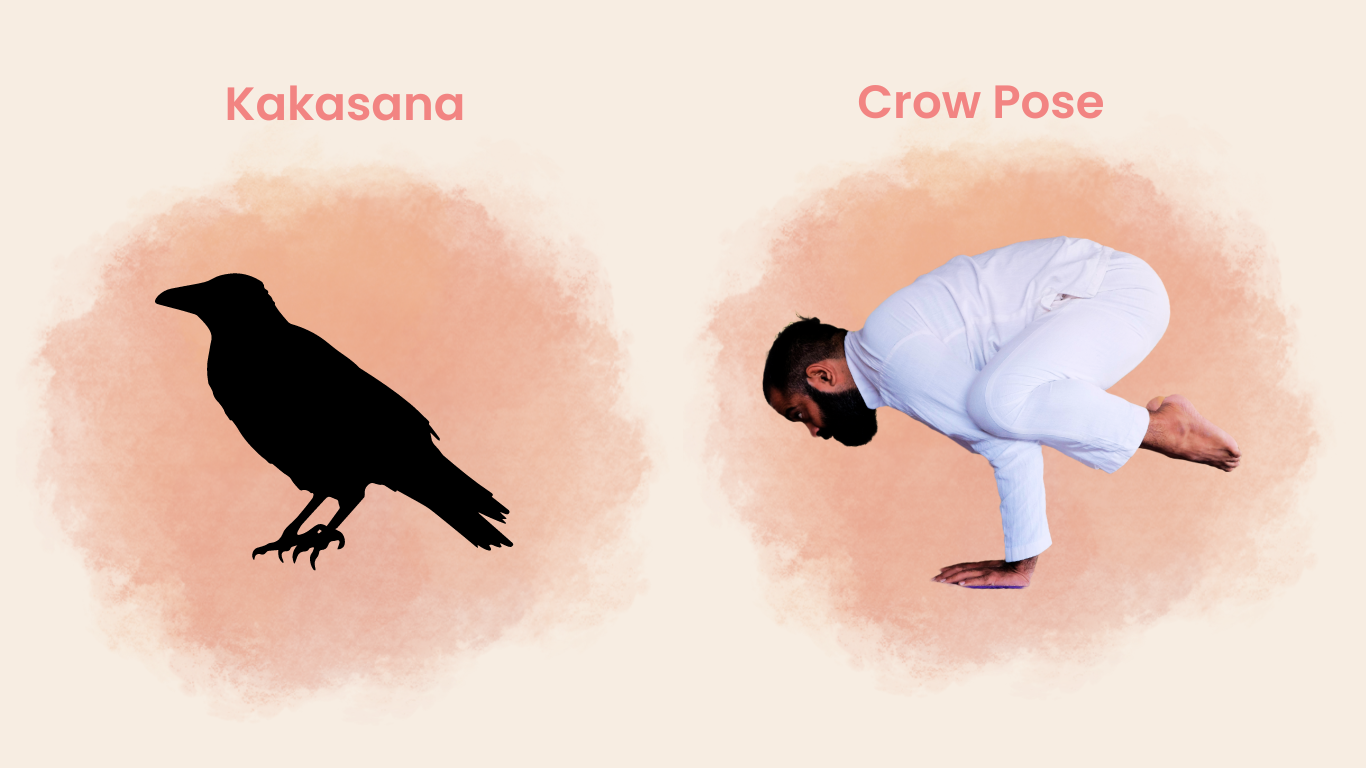How to do Crow Pose
How to do Crow Pose?
Kakasana
Sanskrit: काकासन
Kakasana, or Crow Pose, is one of the foundational arm balancing postures in yoga. The name "Kakasana" is derived from the Sanskrit words "kaka," meaning crow, and "asana," meaning pose. This posture mimics the shape and stance of a crow perched on a branch, symbolizing the balance, focus, and lightness required to perform the pose.
Kakasana is often considered a gateway to more advanced arm balances. The pose not only challenges physical strength and coordination but also cultivates mental focus and concentration. It is a metaphor for the yogi's journey—balancing the various aspects of life with grace and steadiness.
Steps to Perform Kakasana (Crow Pose)
1. Start in a Squat Position (Malasana):
- Begin by squatting down with your knees wide apart.
- Place your hands on the floor in front of you, between your legs shoulder-width apart, with fingers spread wide for stability. Turn the hands outward, so that your index finger points to the front.
2. Prepare Your Arms:
- Bend your elbows slightly and place the inside of your knees on the backs of your upper arms.
- Engage your abdominals and pelvic floor and lift your hips up. Come on your toes.
3. Shift Your Weight Forward:
- Slowly shift your weight onto your hands.
- Look slightly forward to help maintain your balance and prevent rolling forward onto your head.
4. Lift Your Feet:
- Once your weight is balanced on your hands, start by lifting one foot off the ground, then the other. Point your toes and bring your feet together to increase stability..
5. Hold the Pose:
- Engage your core muscles, keep your elbows over your wrists and keep your gaze forward.
- Hold the pose for 5-10 breaths, maintaining steady and even breathing.
6. Exit the Pose:
- To come out of the pose, slowly lower your feet back to the ground and return to the squat position.
Benefits of Kakasana (Crow Pose)
1. Strengthens the Arms and Wrists:
- Kakasana builds significant strength in the arms, shoulders, and wrists, preparing the body for more advanced arm balances.
2. Engages the Core:
- The pose requires strong core engagement, which helps in toning and stabilizing the abdominal muscles and the pelvic floor.
3. Enhances Balance and Coordination:
- Balancing on the hands improves overall body coordination and spatial awareness.
4. Boosts Focus and Concentration:
- The concentration required to hold the pose helps in improving mental focus and mindfulness.
5. Stretches the Upper Back:
- It provides a gentle stretch to the upper back, relieving tension and improving flexibility.
6. Prepares for Advanced Poses:
- Mastering Kakasana serves as a foundation for more challenging arm balances and inversions.
Contraindications for Kakasana (Crow Pose)
1. Wrist Injuries:
- Individuals with wrist pain or conditions like carpal tunnel syndrome should avoid this pose or practice with caution.
2. Shoulder Problems:
- Those with shoulder injuries or instability should refrain from performing Kakasana.
3. Pregnancy:
- Pregnant women should avoid arm balances like Kakasana due to the abdominal pressure.
4. High Blood Pressure:
- The pose may not be suitable for individuals with high blood pressure due to the physical strain involved.
5. Recent Surgeries:
- Anyone recovering from recent surgeries, especially in the abdominal or shoulder areas, should avoid this pose.
Tips for Beginners
1. Use a Block:
- Place a yoga block under your feet to elevate your hips, making it easier to shift your weight onto your hands.
2. Practice Near a Wall:
- Perform the pose near a wall for added security and to prevent forward falls.
3. Engage the Core:
- Focus on engaging the core muscles to stabilize your body and maintain balance.
4. Use a Bolster:
Place a bolster in front of you to allow for cushioning if falling and/or to rest the head.
5. Take It Slow:
- Progress gradually and don’t rush into lifting both feet off the ground until you feel confident and stable.
Next Pose: How to Eagle pose

